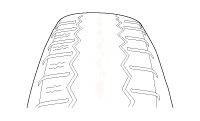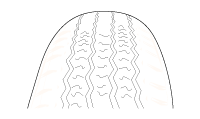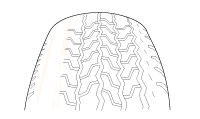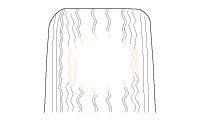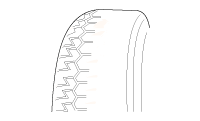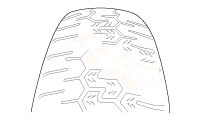Kia Cee'd: General Information / Troubleshooting
| Troubleshooting |
|
Symptom |
Possible cause |
Remedy |
|
Hard steering |
Improper front wheel alignment Excessive turning resistance of lower arm ball joint Low tire pressure No power assist |
Correct Replace Adjust Repair and replace |
|
Poor return of steering wheel to center |
Improper front wheel alignment |
Correct |
|
Poor or rough ride |
Improper front wheel alignment Malfunctioning shock absorber Broken or worn stabilizer Broken or worn coil spring Worn lower arm bushing |
Correct Repair or replace Replace Replace Replace the lower arm assembly |
|
Abnormal tire wear |
Improper front wheel alignment Improper tire pressure Malfunctioning shock absorber |
Correct Adjust Replace |
|
Wandering |
Improper front wheel alignment Poor turning resistance of lower arm ball joint Loose or worn lower arm bushing |
Correct Repair Retighten or replace |
|
Vehicle pulls to one side |
Improper front wheel alignment Excessive turning resistance of lower arm ball joint Broken or worn coil spring Bent lower arm |
Correct Replace Replace Repair |
|
Steering wheel shimmy |
Improper front wheel alignment Poor turning resistance of lower arm ball joint Broken or worn stabilizer Worn lower arm bushing Malfunctioning shock absorber Broken or worn coil spring |
Correct Replace Replace Replace Replace Replace |
|
Bottoming |
Broken or worn coil spring Malfunctioning shock absorber |
Replace Replace |
|
Wheel and tire diagnosis |
||||||||||||||||||||||||||
|
Rapid wear at the center |
Rapid wear at both shoulders |
Wear at one shoulder |
||||||||||||||||||||||||
|
|
|
|
||||||||||||||||||||||||
|
|
|
||||||||||||||||||||||||
|
Partial wear |
Feathered edge |
Wear pattern |
||||||||||||||||||||||||
|
|
|
|
||||||||||||||||||||||||
|
|
|
||||||||||||||||||||||||
 Special service tools
Special service tools
Special Service Tools
Tool (Number and Name)
Illustration
Use
09546-26000
Strut spring compressor
...
Other information:
Kia Cee'd JD Service Manual: ETC (Electronic Throttle Control) System Troubleshooting
Fail-Safe Mode
Item
Fail-Safe
ETC Motor
Throttle valve stuck at 7°
TPS
TPS 1 fault
ECM looks at TPS2
TPS 2 fault
ECM looks at TPS1
TP ...
Kia Cee'd JD Owners Manual: Malfunction indicator lamp
(MIL) (check engine light)
This indicator light is part of the Engine
Control System which monitors various
emission control system components. If
this light illuminates while driving, it indicates
that a potential problem has been
detected somewhere in the emission
control system.
This light will also illumina ...

